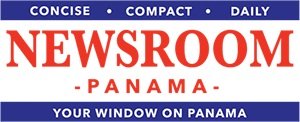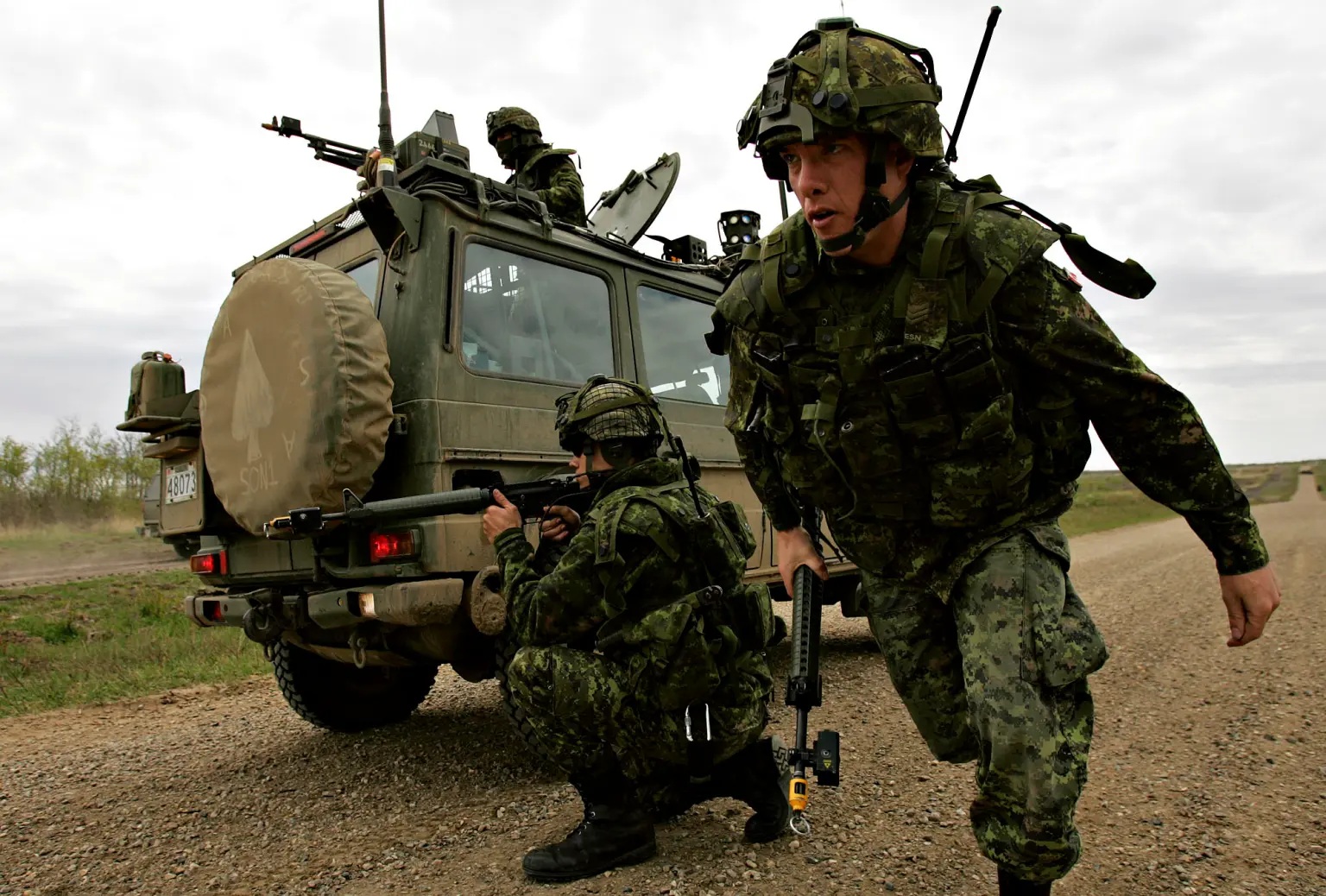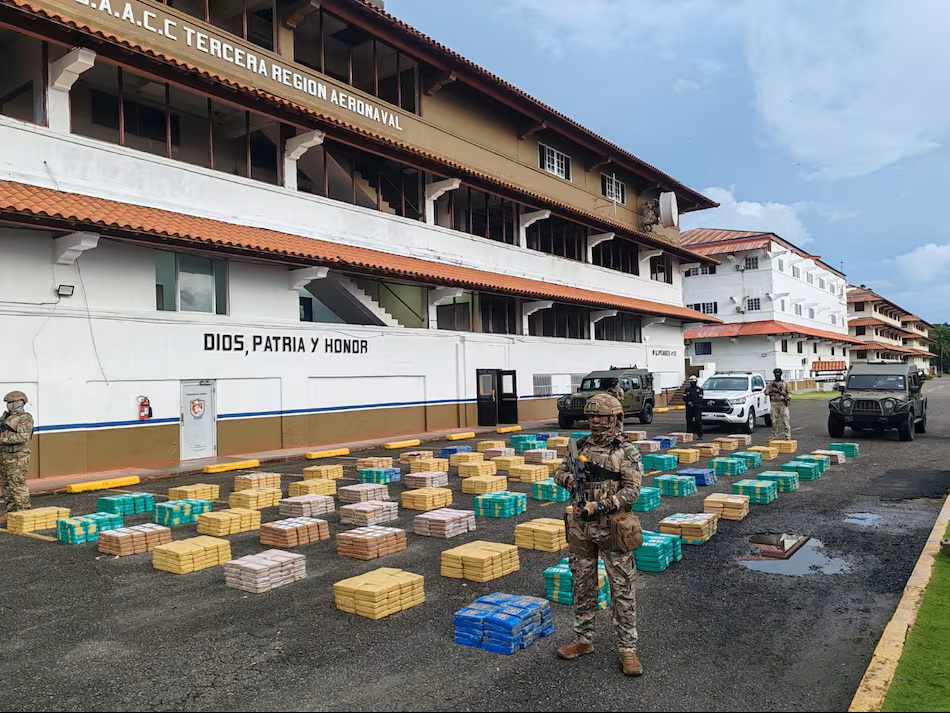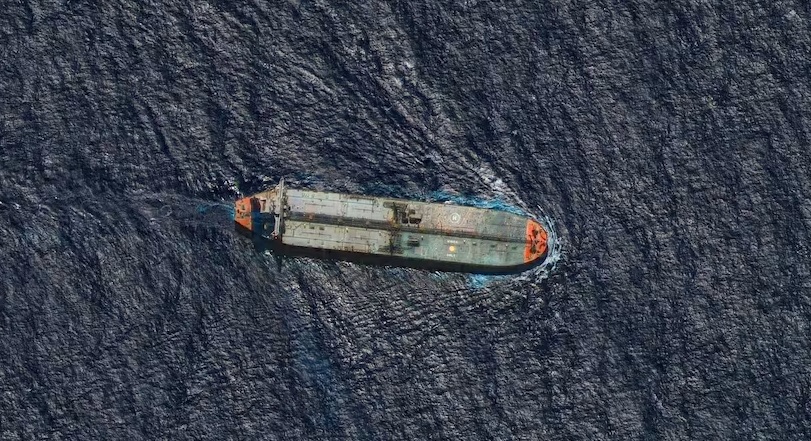Panama’s President Mulino says that US President Trump Lied about Panama Canal’s ‘Reclaiming’

Panamanian President Jose Raul Mulino said on Wednesday morning that U.S. President Donald Trump was lying when he said that the North American leader’s administration was “reclaiming” the Panama Canal. Trump’s comments to Congress came after a deal led by U.S. firm BlackRock was announced earlier Tuesday to buy most of the $22.8 billion ports business of Hong Kong conglomerate CK Hutchison, which includes assets along the Panama Canal.
“Once again, US President Trump is lying. The Panama Canal is not in the process of being reclaimed, and it is certainly not the task that was even discussed in our conversations with Secretary Rubio or anyone else,” said President Mulino.
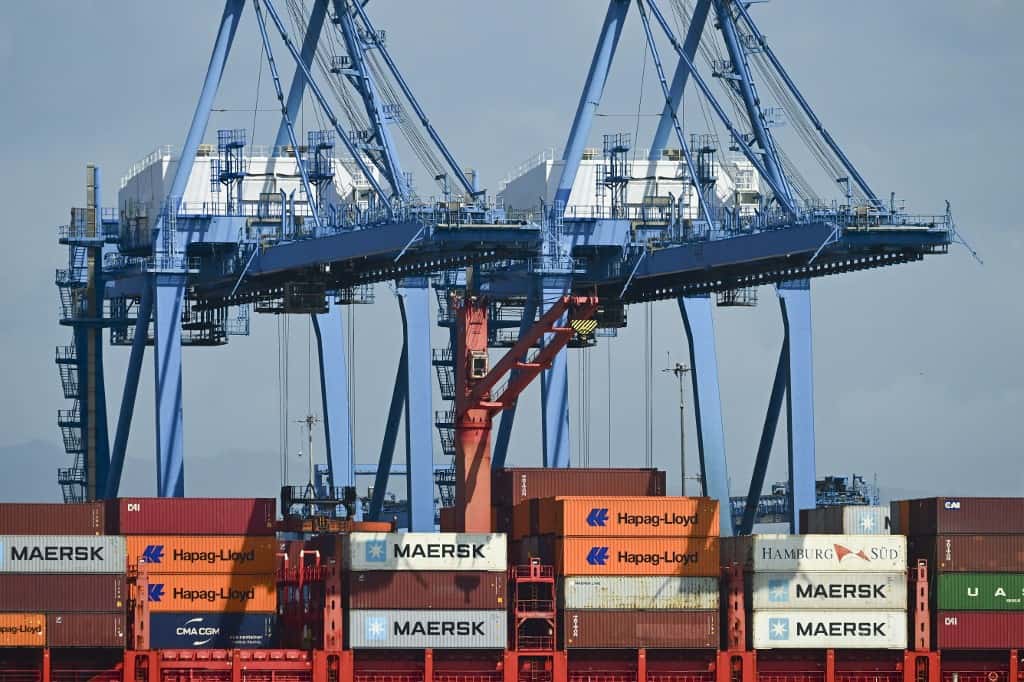
Trump says U.S. is ‘Reclaiming’ Panama Canal after American and Swiss investors Strike Deal to Buy Chinese-Backed Ports

BlackRock’s Larry Fink (above left) used a Direct Line to Trump in Panama Canal Deal
A consortium of investors led by BlackRock agreed to buy majority stakes in ports on either end of the Panama Canal, putting U.S. firms in control of two ports that President Trump raised as a security concern because of their connection to China. The deal with Hong Kong-based CK Hutchison is worth $22.8 billion and also includes dozens of other ports around the world, the companies said Tuesday. President Donald Trump, who had claimed without evidence that China controls the canal, touted the proposed sale as a victory in his address to a joint session of Congress. CK Hutchison said the proposed sale was unrelated to politics. Trump touted it as a victory in his Tuesday night address to a joint session of Congress. “My administration will be reclaiming the Panama Canal, and we’ve already started doing it,” he said. “Just today, a large American company BlackRock announced they are buying both ports around the Panama Canal.”

US President Donald Trump was previously informed that the Hong Kong conglomerate CK Hutchison, parent company of the company that operates the Panamanian ports of Balboa and Cristobal, in the Canal area, was negotiating an agreement in principle with the American fund manager BlackRock for the acquisition of 90% of its shares in those ports. According to The New York Times, in recent days, BlackRock executives, including Chief Executive Laurence D. Fink and board member Adebayo Ogunlesi, briefed President Trump; Treasury Secretary Scott Bessent; Secretary of State Marco Rubio; and other officials on the deal.
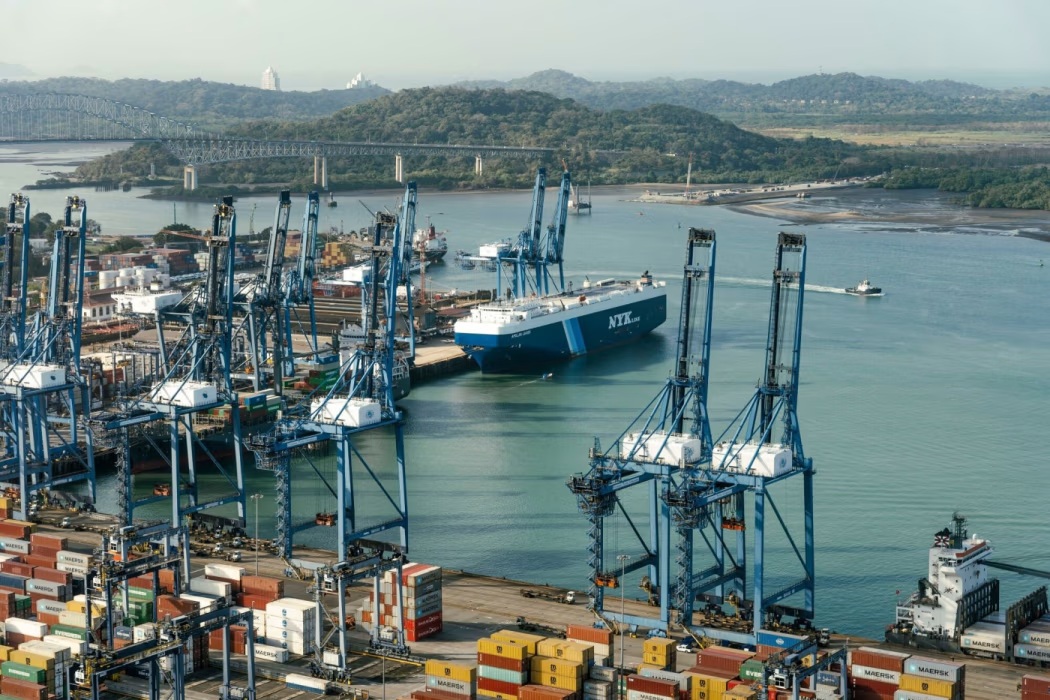
Two people involved in the negotiations said this, adding that the Trump administration had expressed support for the transaction. This economic operation comes after months of warnings from Trump, who has insisted on the need to “regain” control of the Panama Canal due to alleged Chinese influence in the region. According to the NYT, talks between the BlackRock-led consortium and executives at CK Hutchison, owned by the Li family, one of the richest in Asia, began a few weeks ago, according to a person familiar with the discussions. According to the report, the Li family believed it was under political pressure to exit the port business, particularly its stakes in the Panama Canal, a source said. This contrasts with statements by Frank Sixt, co-managing director of CK Hutchison, who said in a statement that the agreement was “purely commercial in nature and completely unrelated to recent political news regarding Panama’s ports.”
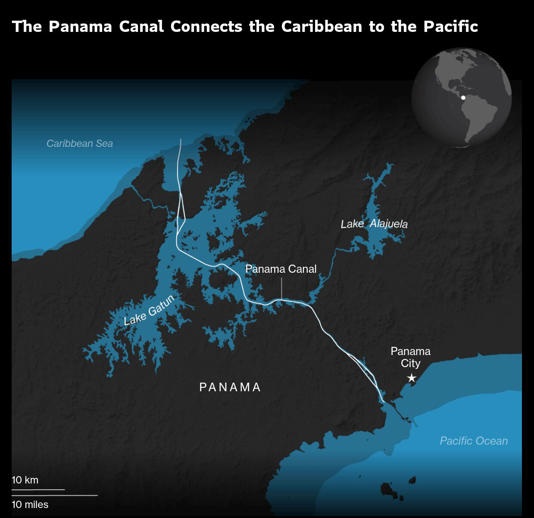
The report highlights that this is BlackRock’s largest infrastructure transaction to date. The company is carrying out the acquisition together with its partner Terminal Investment Limited, which operates ports that receive the world’s largest container shipping company, Mediterranean Shipping. Following the announcement made on Tuesday, the Government of Panama reported, through a statement, that this is a global transaction between private companies, motivated by mutual interests, and clarified that compliance with all local laws and regulations will be monitored before the Panama Maritime Authority makes any decision on behalf of the Panamanian State. The statement also recalled that Panama Ports Company, a subsidiary of Hutchison Ports Holding, is being audited by the Office of the Comptroller General of the Republic. The Government stressed the importance of this audit continuing until its conclusion, noting that the results will be a determining factor in defining the future relationship between the State and the concessionaire.
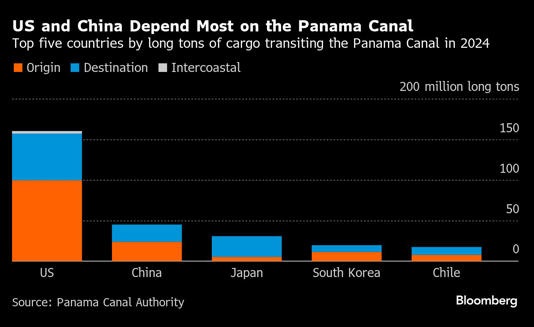
Trump Wants to ‘Take Back’ the Panama Canal. Why that’s not so simple
President Donald Trump has called for the US to retake control of the Panama Canal unless the cost of passage for naval and merchant ships is slashed and it is proven that China does not have control of the canal. Trump’s refusal to rule out the use of force is a throwback to the 19th century era of gunboat diplomacy. While it remains unclear whether Trump is simply posturing, his demand has jolted Latin America, which is less afflicted by territorial disputes than regions such as the Middle East and Asia. It shows a willingness to flout treaties and anger allies to further US interests. It’s also a way of confronting China, which Trump has falsely said is operating the Panama Canal.
What is the Panama Canal?
The Panama Canal is an important waterway that handles roughly 3% of global seaborne trade. It revolutionized maritime shipping when it opened in 1914, shortening journeys by removing the need to go around South Africa’s Cape of Good Hope or through the Strait of Magellan, a narrow passage on the tip of South America between the Atlantic and Pacific Oceans. Around 75% of the cargo transiting through the Panama Canal is going to or coming from the US, making the country by far the biggest beneficiary of the route. The canal operates through a series of locks, which adjust the water level to facilitate the movement of vessels through the channel, a design that has been celebrated as an engineering marvel. The most recent expansion of the canal in 2016 added a third set of locks and doubled capacity. Before Trump’s comments added the risk of conflict, the waterway already was under strain from climate change. The system of locks relies on fresh water from Lake Gatun, which plunged to critically low levels during a drought in 2023 and forced the canal to increase transit fees and curb how many ships could pass through for about a year. The artificial lake also is Panama’s biggest source of drinking water.
What’s the Panama Canal’s History?
The Isthmus of Panama, a thin strip of land between the Caribbean Sea and Pacific Ocean, has been a bustling, globalized trade route since the Spanish conquest of the Americas in the early 1500s. Spanish explorer Vasco Nuñez de Balboa led the first European party across the isthmus in 1513. Before long, conquistadors were marching south across this land link and returning with plundered Incan gold and silver. King Charles I of Spain commissioned the first viability study for a canal in 1534 and decided it was impossible. The earliest significant attempt to construct a marine route was started in 1881 by France’s Compagnie Universelle du Canal Interoceanique and was led by Ferdinand de Lesseps, the builder of the Suez Canal, another key trade chokepoint in Egypt. More than 20,000 workers died of diseases, including malaria and yellow fever, during the nine-year, failed effort. The US took an interest in the canal project after the French effort was aborted. In 1903, the US, in exchange for permanent rights to build and operate the canal, signed a treaty to guarantee the independence of Panama from Colombia, from which it had just seceded. Under this agreement, the US was permitted to use, occupy and control a 10-mile-wide stretch of land to build the waterway, for a one-time payment of $10 million plus an annual annuity of $250,000. By the 1960s, US control of the waterway was fueling resentment in Panama and the larger region. In 1975, Henry Kissinger, then the US secretary of state, warned of “riots all over Latin America” if the US didn’t renegotiate the canal treaty. The following administration of President Jimmy Carter signed the Torrijos-Carter Treaties in 1977, which handed control of the canal and the Canal Zone to Panama at the end of 1999. The canal brought in nearly $5 billion in fiscal 2024, or about 4% of Panama’s gross domestic product. That large amount has been disputed by the Panamanian government.
Why Does Trump Want to Return Control of the Panama Canal to the US?
Trump appears to be both airing his own grievance about the US losing control of the canal and pressuring Panama to lower shipping costs. He has said it was “foolish” for the US to give up the canal in the first place and has described the current costs to use the waterway as “ridiculous” and “very unfair.” For Trump, the canal also plays into the US rivalry with China. Trump has falsely said the canal is operated by the Chinese and controlled by the Chinese military. While China has no role in operating the canal, Hong Kong-based conglomerate CK Hutchison Holdings Limited has operated ports on the Atlantic and Pacific sides of the canal. The canal authority’s chief executive officer, Ricaurte Vasquez, has said that the US and Taiwanese companies also operate ports along the canal. Still, China’s growing influence in Latin America through major infrastructure projects has been a concern to both Democratic and Republican administrations in the US.
Are Trump’s Cost Complaints Justified?
The Panama Canal Authority, which has managed the canal and overseen expansion projects for two and a half decades, did increase fees for all operators regardless of nationality in response to the 2023 drought that forced it to curtail traffic. In late 2023 desperate shippers spent as much as $4 million in auctions for one of the limited slots across the canal. The cost of a slot tumbled to around $200,000 by mid-2024, and a freshwater surcharge was largely eliminated after lake levels rebounded.
How has Panama Responded to Trump’s Demands?
President Jose Raul Mulino has affirmed Panama’s sovereignty over the canal and denied any Chinese involvement in its operations. Nevertheless, Panama began weighing whether to cancel its contract with Hutchinson, and the company in early March agreed to sell control of the unit that operates its ports near the canal. The buyers: US-based BlackRock Inc. and its Global Infrastructure Partners unit, along with Switzerland-based Mediterranean Shipping Co.’s ports division. Mulino also announced he would not renew Panama’s participation in the Belt and Road Initiative, China’s ambitious infrastructure and trade project that extends the country’s global reach. After a visit to Panama on February 2 by US Secretary of State Marco Rubio, the canal authority said it would “optimize transit priority” of US Navy vessels. However, Mulino has denied assertions by the Trump administration that such ships would enjoy free passage, accusing the US of “lies and falsehoods.” Panamanian authorities say that a neutrality treaty prevents special treatment on fees and that any exemptions to established rules would lead to chaos.
What leverage does Trump have?
The US holds significant economic leverage over Panama as its biggest trade partner and source of foreign direct investment. While Trump declined to rule out military intervention, it’s considered unlikely that he will violate international treaties and unilaterally retake control of the waterway. Trump has a history of making outrageous statements to bring attention to a topic and initiate negotiations. He also could be looking for leverage to combat migration to the US. Panama is a key transit route for migrants from Venezuela, Haiti and Ecuador. Tom Homan, the border czar in Trump’s second administration, has said he wants to work with Panama’s authorities to shut the Darien Gap, a section of jungle on Panama’s border with Colombia that migrants hike through on their way to the US.
